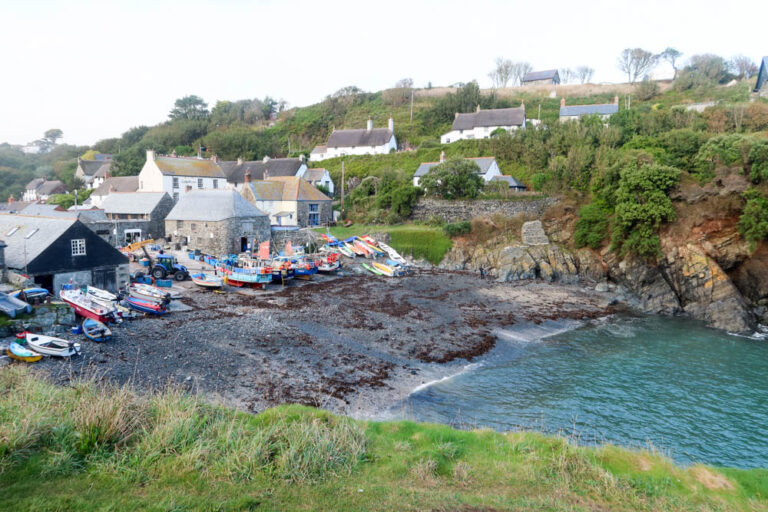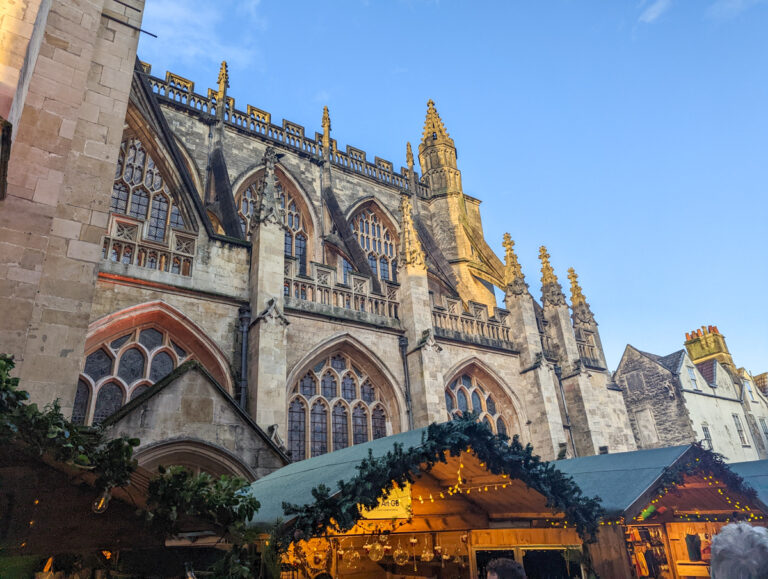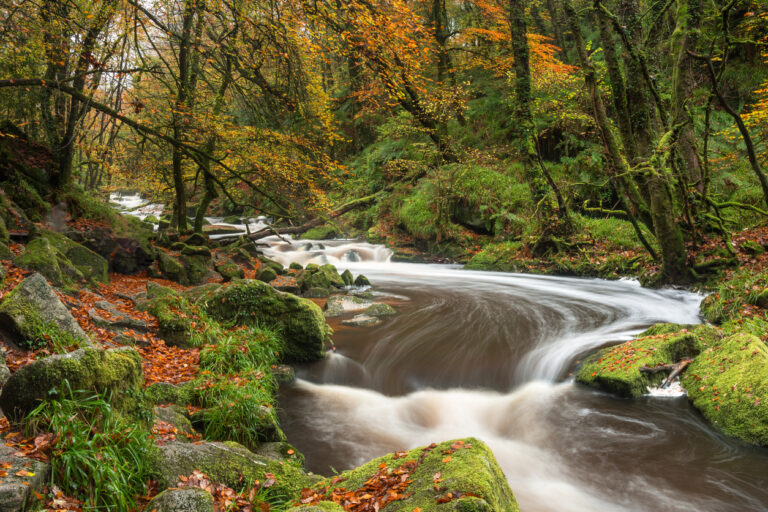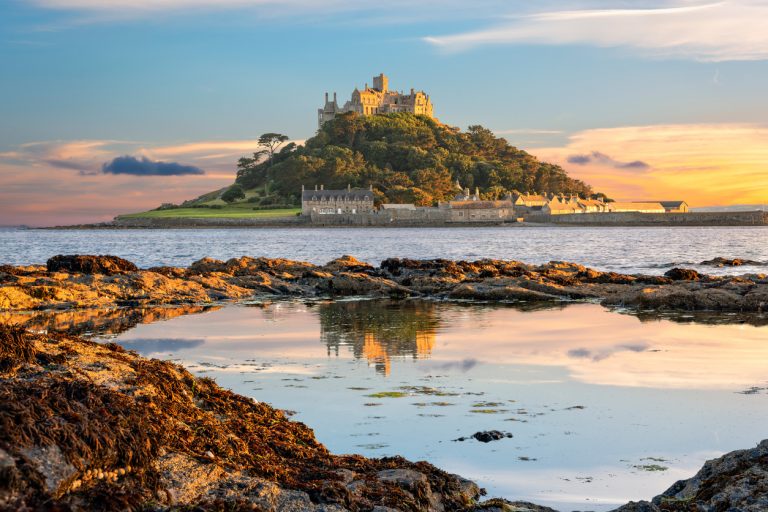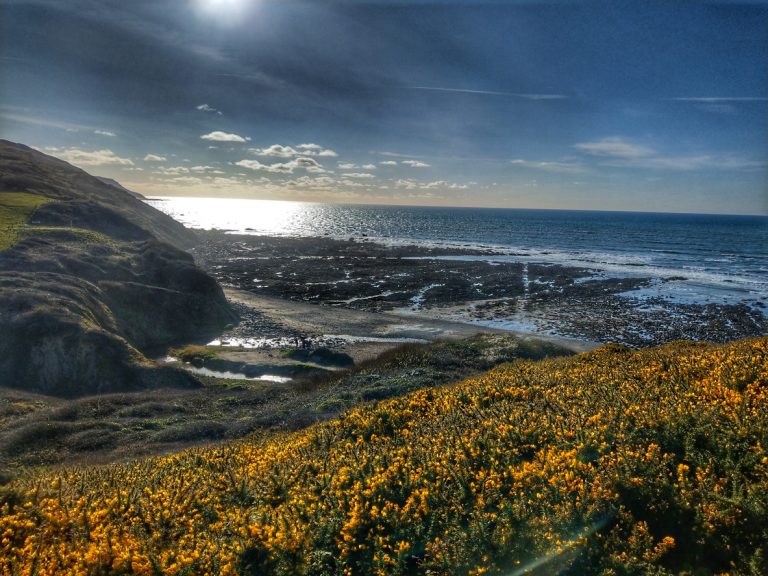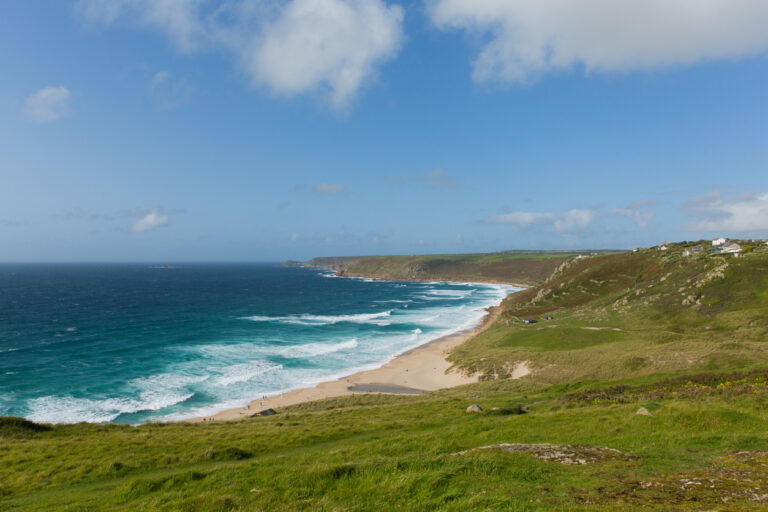Things to do in Camborne: Cornwall’s rich mining history
From learning about authentic local culture to enjoying the stunning natural surroundings, there are loads of things to do in Camborne.
Camborne isn’t the most popular Cornish town to visit, and there aren’t any jaw-droppingly beautiful beaches in the centre (it’s inland!) – but what it lacks in natural scenery, it more than makes up for in history and local culture.
Camborne and its neighbouring town, Redruth, were the heart of Cornish mining culture (and quite possibly the most important place for mining in the world) for centuries.
Both towns are among the best in the country to learn about the tin mining industry and the Cornish diaspora – this was when Cornish people moved all over the world, taking their mining expertise and culture with them.
My grandma was born in Camborne, and I still have family living in the town. In fact, most of my Cornish ancestors were miners here!
I’ve visited the town a lot to see my family (way more than 99% of tourists to Cornwall!), and have spent some time checking out all of the best Camborne activities and attractions for this blog post.
Things to do in Camborne
While this old mining town might not be a big, famous touristy hotspot, those who have visited are likely to refer to it as a bona fide hidden gem. Here are some of the best things to do!
Camborne Town Centre
Camborne town centre is full of history and heritage, thanks to the mining boom and its prosperity throughout the 18th century.
Many buildings hark back to this age, and some parts of the town centre will have you feeling like you’re in a time warp.
You can explore the town centre by walking around the Camborne Heritage Trail, checking out attractions like:
Camborne Library and Trevithick Memorial Statue
As mentioned in Go South West’s Camborne history lesson above, Trevithick is the guy who built the steam engine locomotive. It was the first in the world and paved the way for modern trains and cars! Don’t miss the nearby plaque that commemorates where the locomotive journey left too.
The Old Market House
Built way back in 1802, although rebuilt in the 1860s, this used to be the Town Hall and Magistrates Rooms.
Josiah Thomas Memorial Wing of Camborne School of Mines
Camborne School of Mines now lives in Penryn, as part of the University of Exeter’s Cornwall campus, but the first branch of the school was right here in town! Most of it has been demolished, but you can still check out the Josiah Thomas Memorial Wing.
The Clink
Offering a snapshot to another side of 18th century Cornwall, “the clink” was the local lock-up for felons and drunks, usually just for a night!
Heartlands Mining Museum
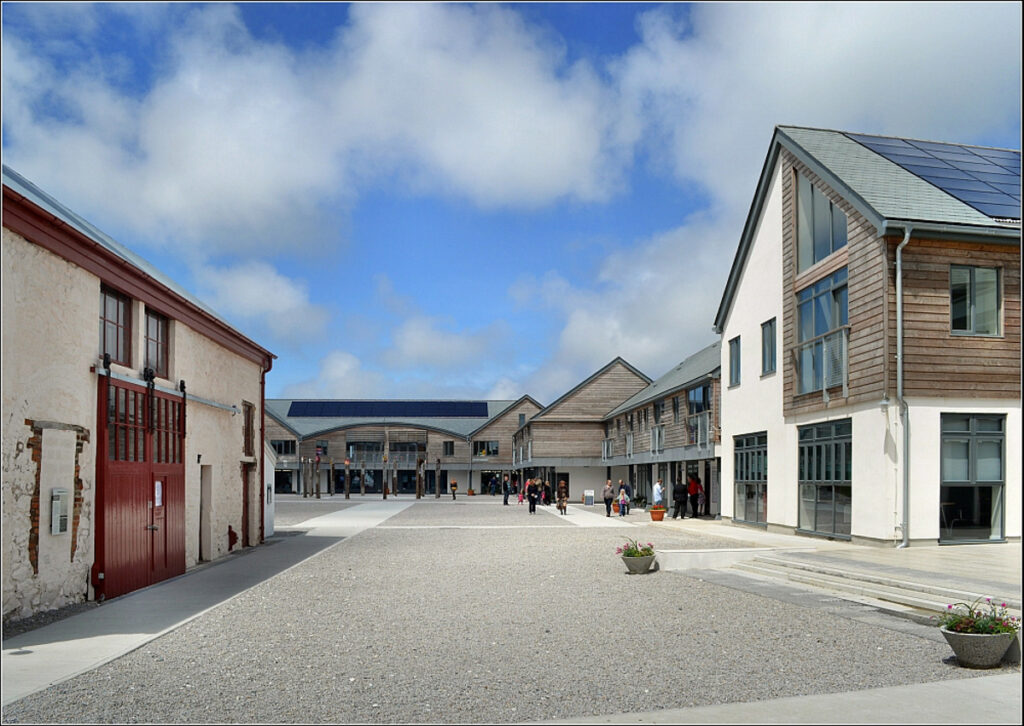
Heartlands is dedicated to the incredible feats of the mining complex in Camborne.
Its mining museum details some of the most important things that you’ll need to know about the tin mining industry in Camborne (and further afield in other parts of Cornwall).
If you’re visiting with kids, there’s also a giant adventure playscape and a soft play.
Cornish Diaspora Gardens
In the 19th century, thousands of Cornish people left the UK due to the fall in mining and subsequently jobs.
Taking their mining skills and technologies, they found homes in many other places, and have since become known as the Cornish Diaspora.
Today, there are still pockets of Cornwall all over the world – particularly in places where mining was popular.
I’ve visited a Cornish mine in Ballarat, Australia and have tried Mexican Cornish pasties in Pachuca, Mexico!

In memory of these emigrants, the Cornish Diaspora Gardens were created.
The Cornish Diaspora Gardens are also located at Heartlands.
Each of the gardens is dedicated to a different area that the diaspora went to, including Australia, New Zealand, South Africa, North and South America.
Full of water features and poems, it’s dedicated to remembering the Cornish people and the lives they led both here and away in their second homes.
King Edward Mine Museum
Next up is the King Edward Mine Museum, which is also dedicated to mining in Cornwall.
This particular mine opened in 1844 and played a huge part in providing the world with the tin it so desperately wanted and needed.
But that’s not all this centre did. In fact, this was one of the sites of the Camborne School of Mining, and what the school ended up doing was far more than teaching.
In an unprecedented move, the school ended up taking over the mine entirely, buying new materials and equipment, and along with teaching the new generations how to mine, gave them a job to do straight away.
It essentially saved the mine they bought and it was successful for many years after.
At the museum, you’ll learn all about this interesting story and its ramifications for the world of mining to this day.
East Pool Mine Museum
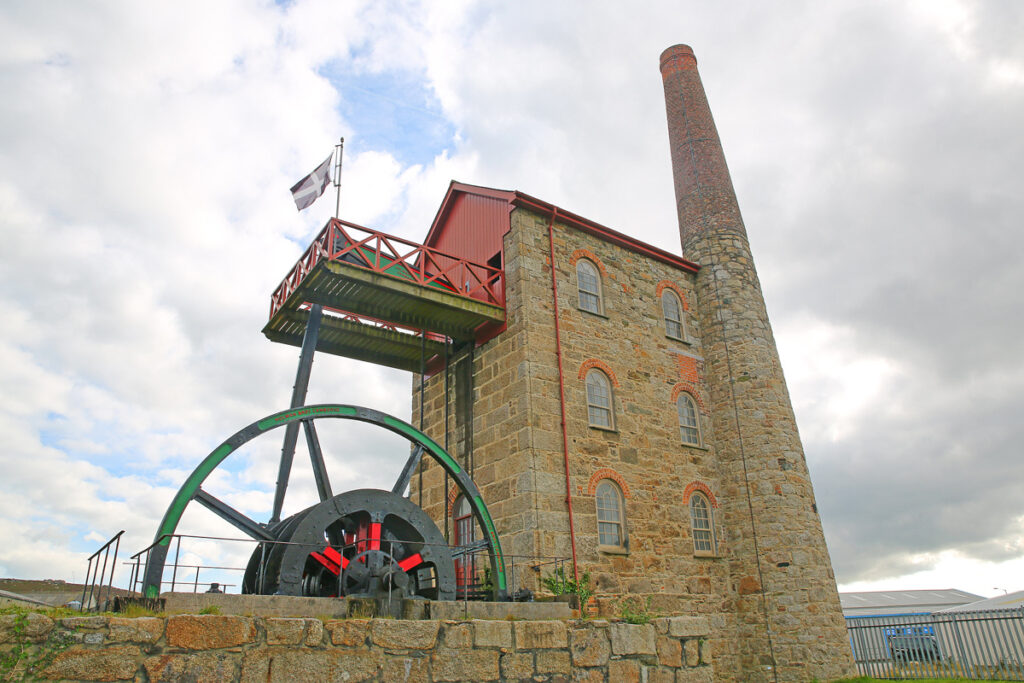
You guessed it – it’s another mining museum. But with such a rich and important mining history in the area, it would be impossible to confine it to just one museum!
Run by the National Trust, the East Pool Mine Museum is home to an impressive Cornish beam engine – an engineering achievement like no other at the time.
It also has an industrial heritage discovery centre nearby where you can see several engine houses, along with the tunnel and chimney of the mine.
If you’re a National Trust member you can enter the mine for free. See my full review of National Trust membership here.
Things to do around Camborne
Carn Brea

In the mood for a good walk with some stunning views, a monument built in the early 1800s, and a restaurant to indulge in at the top? Carn Brea truly has it all.
An obelisk that can be seen from miles away, both Camborne and Redruth can be seen from the top, along with the UNESCO mining landscape and both coasts on either side of the county.
An impressive 90 foot tall, the hexagonal column was built in memory of Francis Bassett, Lord de Dunstaville.
He was part of the most important mining family of the time who lived in the area for more than 700 years! It’s hollow inside except for the staircase that leads to the viewing platform.
Nearby is a castle which has since been turned into a Mediterranean restaurant (strange combo, but there you go!) so you can reward yourself for the walk. Enjoy!
Stithians Lake (South West Lakes Trust)
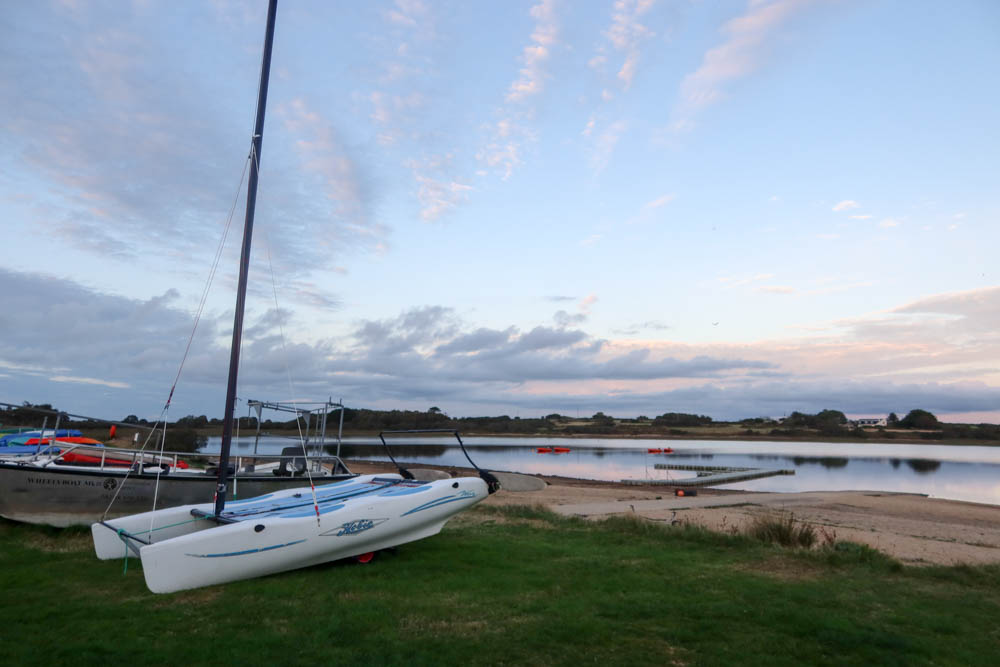
Are you a bit of an adventurer and looking for some fun in the water? Stithians Lake is home to a campsite and tonnes of opportunities and watersports, and it’s actually one of my favourite places for SUP-ing in Cornwall.
With outdoor activities and a family-friendly cafe, it’s an all-around super fun place to be.
Paddleboarding, kayaking, and glamping are all options available!
And that’s before even taking in the impressive beauty of the area. It’s actually the largest body of water in West Cornwall and it basks in the centre of rolling green fields.
So, while windsurfing and other watersports are available, it’s also a great place to visit just for the views and walks!
Portreath Beach
If you’re visiting Camborne and would like a trip to the seaside, this is the best Cornish beach for you.
Only a 10-15 minute drive away, Portreath Beach is a beautiful example of Cornwall’s famous sandy beaches and looks every bit the picture-perfect postcard image.
It’s also an award-winning beach having received the Seaside Award in 2022.
Plenty of fun activities are available on Portreath Beach, from surfing to kayaking.
Perfect for surfers and casual sunbathers alike, there is something for everyone at this beach. Even dogs are welcome!
The surrounding area is delightful, too, with the little village being home to several pubs, a bakery, and a tea house. A real quintessentially British coastal town.
Hike from Portreath to Hayle
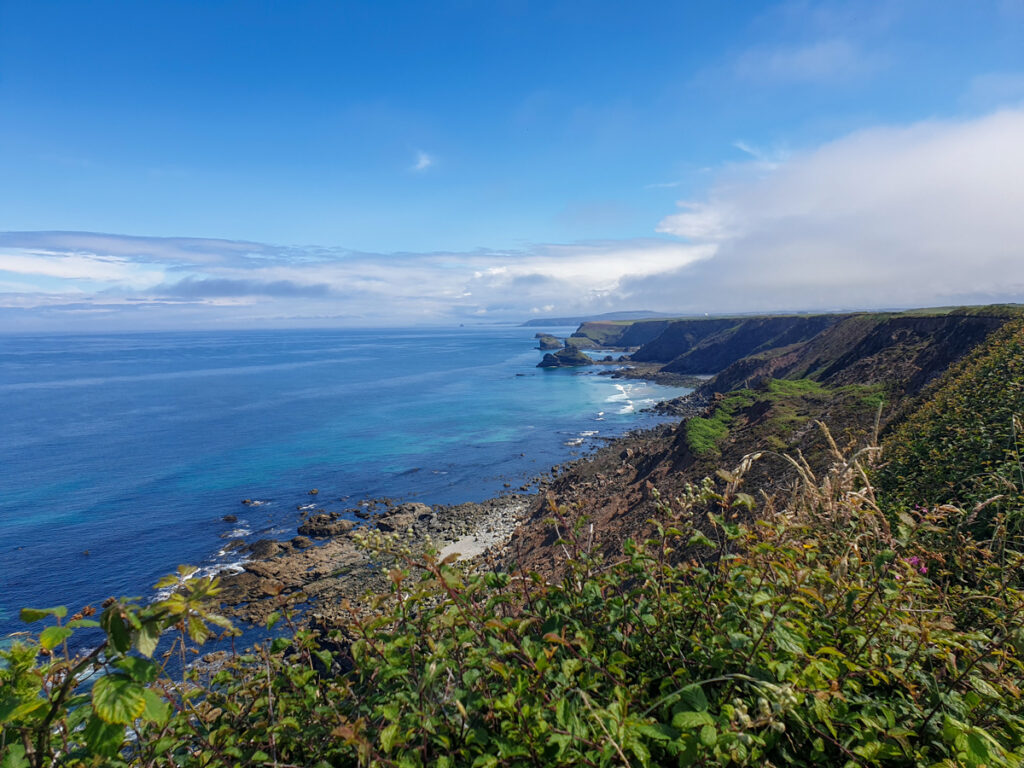
From Portreath, you can hike along the coastal cliffs to reach Hayle in West Cornwall.
This is one of my favourite Cornwall hiking destinations, as the coast is particularly moody as you come out of Portreath and Mutton Cove, which is close to Godrevy Point, is one of the best places to see seals in Cornwall.
The whole hike is 11.7 miles, much of it spanning Gwithian Beach which is one of my favourite beaches in Cornwall.
Other Destinations near Camborne and Redruth
Falmouth
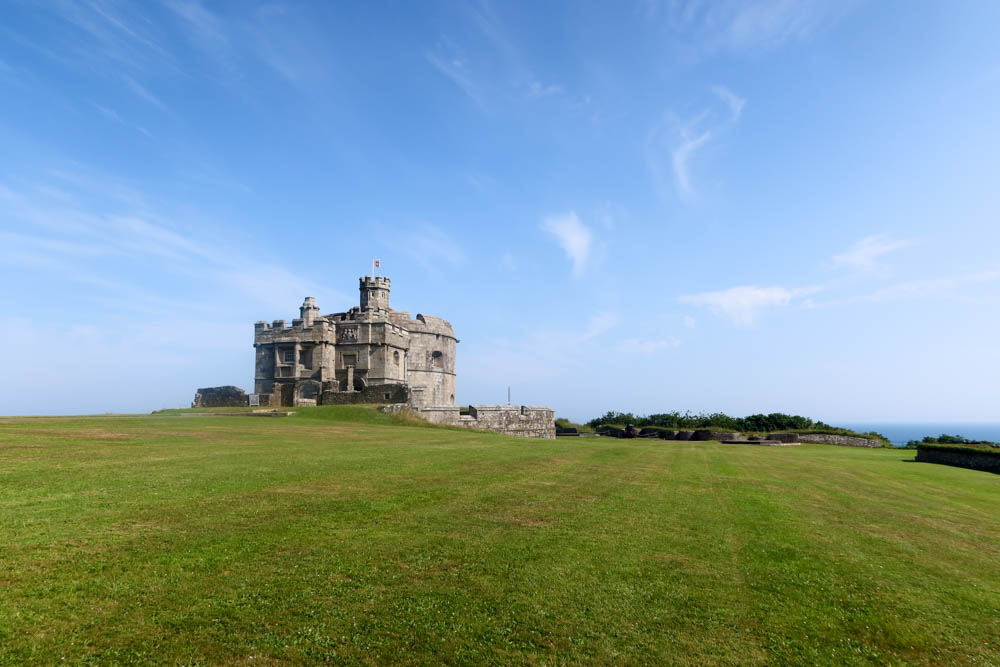
Not very far from Camborne is Falmouth, which I consider to be Cornwall’s trendiest town!
A visit here is full of history with popular attractions like Pendennis Castle and the Royal Maritime Museum Cornwall, the harbour, and incredible food and drink locations.
Oh, and don’t miss out on the gorgeous high street full of shopping opportunities, and local nearby gardens like Trebah Gardens.
Here are all the best things to do in Falmouth.
St Ives
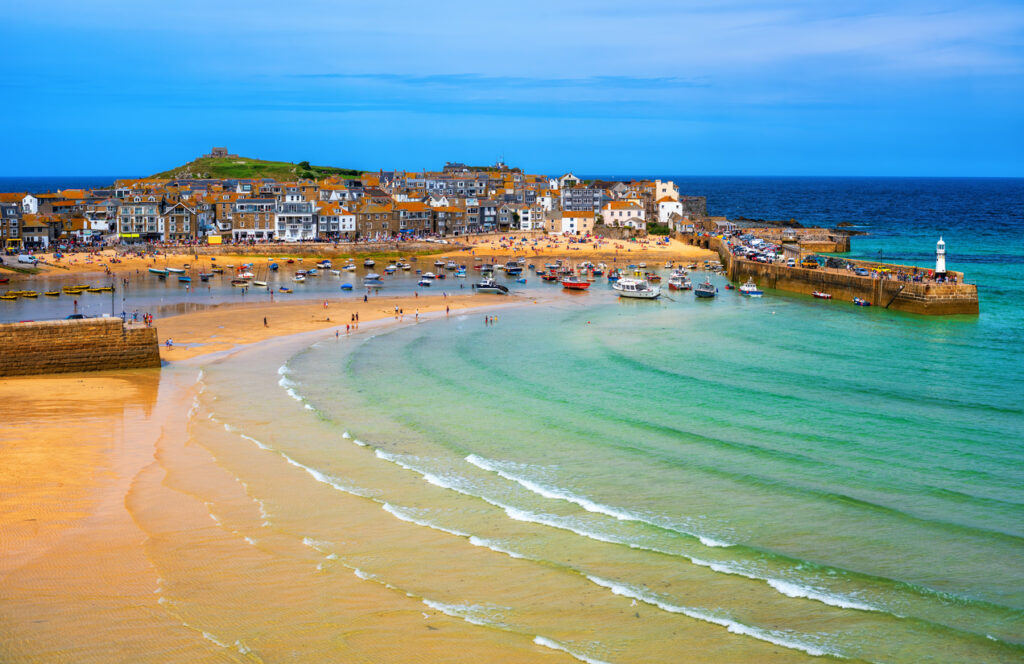
St Ives is a great place to visit if you love beachy, arty vibes.
It sits in some of the finest scenery in West Cornwall.
From its art culture to the seals, dolphins, and whales you might spot, everywhere you go there is something to learn and do.
A popular diving, surfing, and paddleboarding spot, as well as home to many art galleries, it’s just simply a great place to be.
Head on down there during your next visit to Camborne.
Here are all of the best things to do in St Ives.
Truro
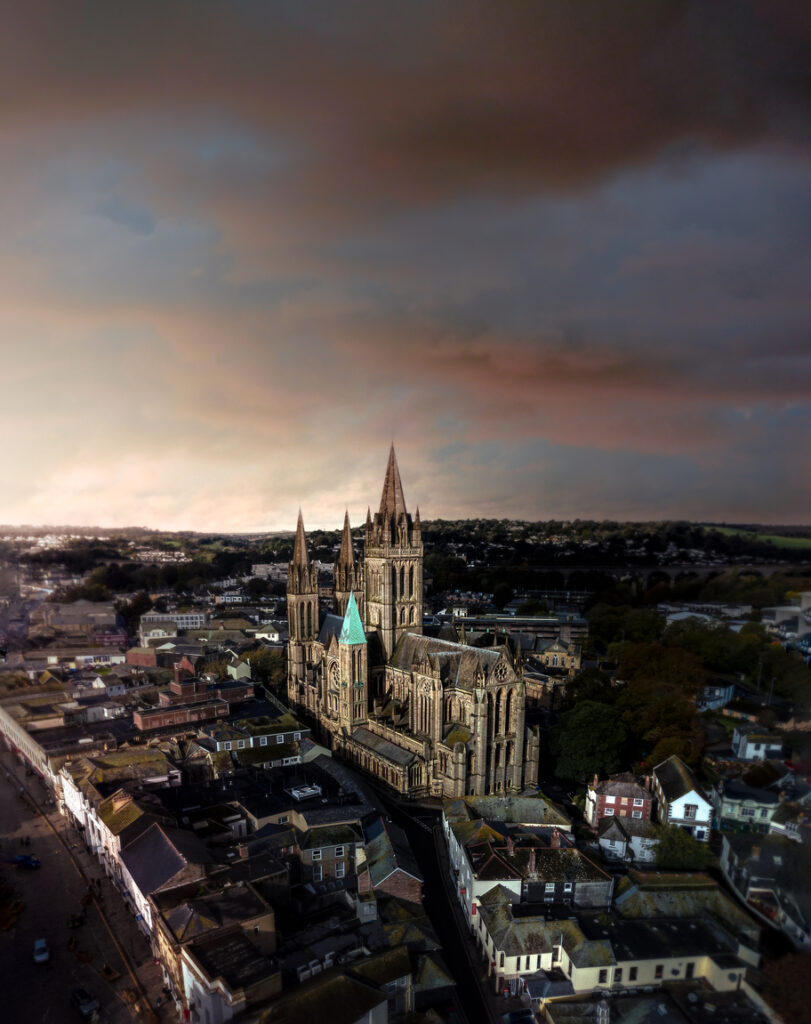
Did you know that Cornwall only has one city? That would be Truro and well worth a visit!
Highlights include its three-spired Gothic revival cathedral, the Royal Cornwall Museum, Lemon Street Market and various hiking and cycling trails spanning the centre.
It’s also a pretty city to walk around – largely built in Bath stone, much of the architecture dates back to the Georgian period.
Click here to see all of the best things to do in Truro.
Where to stay in Camborne
John Francis Basset Wetherspoon Hotel
On the budget end, but actually very beautiful for a Wetherspoon Hotel, the first hotel on our list is the John Francis Basset Wetherspoon Hotel.
Located in an impressive building dating back to the 18th century and central to all of Camborne’s best attractions, it’s a great choice of hotel for staying in the town.
Tyacks Hotel
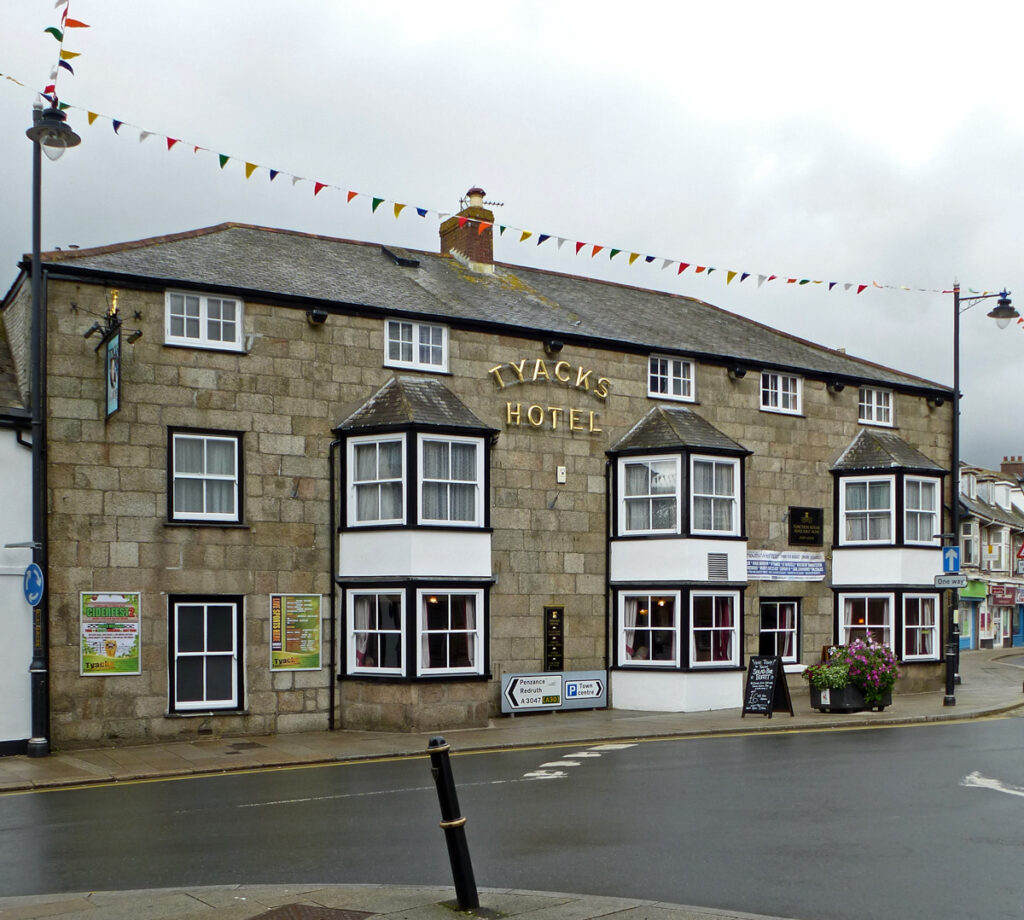
Tyacks Hotel is a quaint and beautiful old 18th-century coach house full of charming features, and cosy corners.
With home-cooked meals, and situated right in the heart of the old mining community, it’s a perfect option for a Camborne weekend break.
Camellia Cottage
Camellia Cottage is a fantastic option if you’re looking for a little extra luxury. The holiday home cottage is full of private amenities, from parking through to a fully stocked kitchen.
It has two bedrooms, a flat-screen TV, a living room, and a bathroom, so your stay here can be fully self-catered should you wish for a romantic meal in one night.
A stay here is more than just somewhere to sleep, but is very much a part of the holiday!
And don’t worry, pets are allowed as well as people, so bring the whole family!
FAQs about Camborne
How to get to Camborne
You can get to Camborne by taking the M5 (from Bristol and the Midlands) or A303 (from London) to Exeter and then joining the A30.
This road bypasses Camborne; once you reach Pool, just follow signs to the town.
Camborne is around two hours from Exeter, 3 hours 15 minutes from Bristol and 5 hours 30 minutes from London.
Taking the train to Camborne
You can also take the train to Camborne; it’s on the main Cornish line which connects to London Paddington and Reading, and there are also connections to Bristol.
How to get around Camborne
Camborne’s a small town, so it’s easy enough to walk around the centre.
For the places outside of the city centre, you’ll need a car.
Is Camborne worth a visit?
Camborne gets a bit of a bad rep, and while it’s not as quaint and quintessential as Cornwall’s fishing villages, it’s worth visiting if you’re a fan of history and architecture.
It was the centre of Cornish mining history for hundreds of years, and nowadays there are a few places to visit to learn about this part of the nation’s history.
I find walking around the historic streets quite interesting, and it’s in a good location to access beaches on either side of the coast.
Also, accommodation is also generally cheaper in Camborne than in beach towns.
Does Camborne have a beach?
No, Camborne doesn’t have a beach.
The closest is Portreath, which is 4 miles away; my grandma always told me that she used to walk there when she was growing up in Portreath, although this would be more challenging nowadays with many more cars on the road!
It’s a 10-15 minute drive or a half-hour bus ride.
Where can I park for free in Camborne?
There’s free car parking on many roads in Camborne, and when we visit the town we usually park in Rosewarne Car Park, which is only payable between 9 am – 4 pm Monday to Saturday; after 4 pm and on Sundays it’s completely free.
Are you ready to visit Camborne?
While Camborne isn’t home to any of Cornwall’s most famous attractions like the Eden Project and Tintagel Castle, its mining history makes it a fascinating place to visit (and you shouldn’t just take my word for that – UNESCO think so too!).
Whether you’re just passing through or spending a holiday in town, this list of the best Camborne highlights should have helped you to plan your stay.
Don’t forget to check out my Cornwall archives for more, or if you have any questions drop me a message on Instagram – I’m always happy to help!

